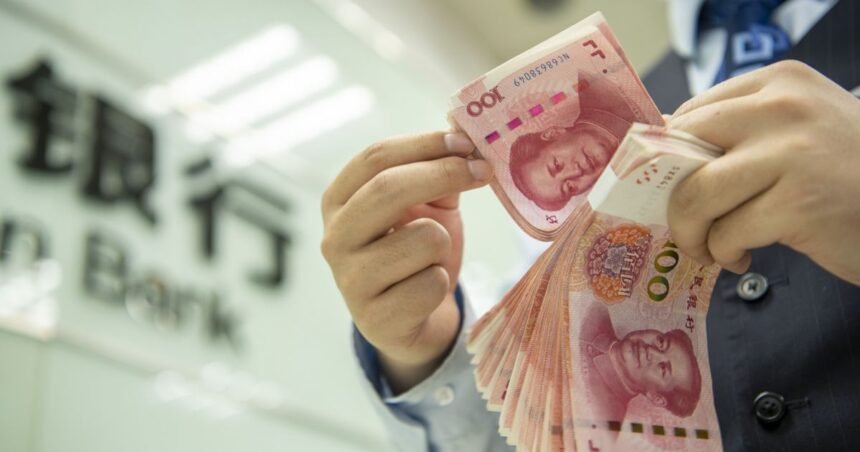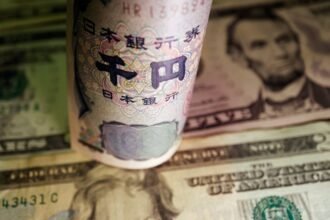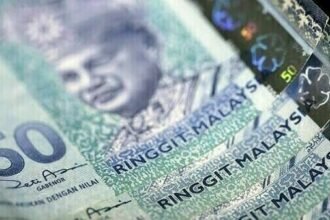Beyond its economic functions (medium of exchange, store of value, unit of account, measure of debt), money always has an intrinsic political and social dimension; see especially Stefan Eich, The Currency of Politics: The Political Theory of Money from Aristotle to Keynes (Princeton, NJ, 2022).
Eswar R. Prasad, Gaining Currency: The Rise of the Renminbi (Oxford, 2017), 1–10.
Ibid., 5–14.
See Patrick Hess, Episodes of High Inflation in China and Their Impact, unpublished manuscript, presented at the conference “Inflation and Deflation in East Asia” (Ludwigshafen: Ostasieninstitut, 20 May 2022).
Renminbi (RMB) is the official name for China’s currency. The units of the RMB are called yuan.
Quote taken from Prasad, Gaining Currency (see note 2), 16.
For a legal and political categorisation of the PBoC, see Knut B. Pißler, “History and Legal Framework of the People’s Bank of China”, in Central Banking and Financial Stability in East Asia, ed. Frank Rövekamp, Moritz Bälz and Hanns Günther Hilpert (Cham: Springer, 2015), 11–24.
For this differentiation in detail, see Eric Helleiner and Hongying Wang, “The Richness of Financial Nationalism: The Case of China”, Pacific Affairs 92, no. 2 (2019): 211–34.
Another motive was undoubtedly to promote the domestic export industry.
For example, Gregory Chin, “China’s Rising Monetary Power”, in The Great Wall of Money: Power and Politics in China’s International Monetary Relations, ed. Eric Helleiner and Jonathan Kirshner (New York, NY: Cornell University Press, 2014), 184–212.
Fundamentals of China’s foreign policy, Nadine Godehardt, Wie China Weltpolitik formt. Die Logik von Pekings Außenpolitik unter Xi Jinping, SWP-Studie 19/2020 (Berlin: Stiftung Wissenschaft und Politik, October 2020).
People’s Bank of China (PBoC) Study Group, “The Timing, Path and Strategies of RMB Internationalisation” (Beijing, 2006), quoted in Yiping Huang et al., Paths to a Reserve Currency: Internationalization of the Renminbi and Its Implications, ADBI Working Paper 482 (Tokyo: Asian Development Bank Institute, May 2014), 3.
On the goals of RMB internationalisation: Alex He, Domestic Sources and RMB Internationalisation: A Unique Journey to a Major Global Currency, CIGI Papers 67 (Waterloo, Ontario: Centre for International Governance Innovation, May 2015), 3–13; Edwin L.-C. Lai, One Currency, Two Markets: China’s Attempt to Internationalize the Renminbi (Cambridge: Cambridge University Press, 2021), esp. chapter 3: “Why Does China Want to Internationalize the Renminbi?”, 37–57; Ming Zhang and Bin Zhang, “The Boom and Bust of the RMB’s Internationalisation: A Perspective from Cross-Border Arbitrage”, Asian Economic Policy Review 12, no. 2 (2017): 237–53; Paola Subacchi, The People’s Money: How China Is Building a Global Currency (New York, NY: Columbia University Press, 2017), esp. chapter 5: “Living with a Dwarf Currency”, 85–98. The goals mentioned are derived from the concrete measures and occasional political announcements. The Chinese government itself has not yet published an official strategy paper on RMB internationalisation.
See Benjamin J. Cohen, “The Benefits and Costs of an International Currency: Getting the Calculus Right”, Open Economies Review 23, no. 1 (2012): 15–20.
On the internationalisation of currencies in general: Benjamin J. Cohen, Currency Statecraft: Monetary Rivalry and Geopolitical Ambition (Chicago, IL: Chicago University Press, 2019); Peter B. Kenen, “Currency Internationalisation: An Overview”, in Bank for International Settlements (BIS), Currency Internationalisation: Lessons from the Global Financial Crisis and Prospects for the Future in Asia and the Pacific, BIS Papers 61 (Basel, 2011), 9–18, https://www.bis.org/publ/bppdf/ bispap61.pdf (accessed 22 February 2024).
For the benefits and costs of RMB internationalisation and currency internationalisation in general described below, see Cohen, “The Benefits and Costs of an International Currency” (see note 14); Haihong Gao and Yongding Yu, “Internationalisation of the Renminbi”, in BIS, Currency Internationalisation (see note 15), 111–13; Lai, One Currency, Two Markets (see note 13); Liqing Zhang and Kunyu Tao, “The Benefits and Costs of Renminbi Internationalisation”, in Renminbi Internationalisation: Achievements, Prospects, and Challenges, ed. Barry Eichengreen and Masahiro Kawai (Tokyo and Washington, D.C.: Asian Development Bank, 2015), 348–75.
See Cohen, “The Benefits and Costs of an International Currency” (see note 14), 27.
For empirical evidence see Pierre-Olivier Gourinchas and Hélène Rey, Exorbitant Privilege and Exorbitant Duty, Discussion Paper no. 16944 (London: Centre for Economic Policy Research [CEPR], 22 January 2022). Calculations for 2017 by Edwin Lai, see Lai, One Currency, Two Markets (see note 13), 43–46.
This aspect is particularly emphasised by the following Chinese authors: Gao and Yu, “Internationalisation of the Renminbi” (see note 16), 118–21; Lai, One Currency, Two Markets (see note 13), 48–49; Zhang and Tao, The Benefits and Costs of Renminbi Internationalisation (see note 16), 354–59.
For the following, see the information in literature presented in note 16.
This fundamental theorem of monetary and exchange rate policy was first described analytically by the economists Marcus Fleming and Robert Mundell in the early 1960s, see James M. Boughton, “On the Origins of the Fleming-Mundell Model”, IMF Staff Papers 50, no. 1 (2003): 1–9.
See Hector Perez-Saiz and Longmei Zhang, Renminbi Usage in Cross-Border Payments and the Role of Swap Lines and Offshore Clearing Banks, IMF Working Paper 77/2023 (Washington, D.C.: IMF, March 2023), 3–4.
On the concept of “exorbitant duty”, see Gourinchas and Rey, Exorbitant Privilege (see note 18).
And it fulfils this obligation, at least in the systemically important financial markets. For an empirical estimate of the costs borne by America during the global financial market crisis of 2008/09 and other financial crises, see Gourinchas and Rey, Exorbitant Privilege (see note 18).
This is a development that is sometimes referred to in the literature as the “new Triffin dilemma”, see Pierre-Olivier Gourinchas, Hélène Rey and Maxime Sauzet, The International Monetary and Financial System, NBER Working Paper 25782 (Cambridge, MA: National Bureau of Economic Research, April 2019), 33–36; Perez-Saiz and Zhang, Renminbi Usage in Cross-Border Payments (see note 22), 5.
See Randall Germain and Herman Mark Schwartz, “The Political Economy of Currency Internationalisation: The Case of the RMB”, Review of International Studies 43, no. 4 (2017): 765–87.
On this metaphor, see Miguel Otero-Iglesias, Renminbi Internationalisation: Stuck in Mid-River – For Now, Analyses of the Elcano Royal Institute 84/2018 (Madrid, July 2018); Subacchi, The People’s Money (see note 13), 106.
For the following description of the components of renminbi internationalisation, see Yin-Wong Cheung, “A Decade of RMB Internationalisation”, Economic and Political Studies 11, no. 1 (2023): 47–74; Lai, One Currency, Two Markets (see note 13), 58–93; Prasad, Gaining Currency (see note 2), 37–149; Subacchi, The People’s Money (see note 13), 108–35.
The People’s Bank of China, 2023 RMB Internationalisation Report, 22, 23, http://www.pbc.gov.cn/en/3688241/3688636/ 3828468/4756463/5163932/2023120819545781941.pdf (accessed 31 January 2024).
On the spread and functioning of cross-border RMB payments, see Perez-Saiz and Zhang, Renminbi Usage in Cross-Border Payments (see note 22), 7–12.
More on this in the following section “China’s New Digital Currency”, pp. 23ff.
More on this in the following section “China’s New Digital Currency”, pp. 23ff.
On this concept, see Lai, One Currency, Two Markets (see note 13); Subacchi, The People’s Money (see note 13), 114–16.
On the development of China’s exchange rate regime, see Sonali Das, China’s Evolving Exchange Rate Regime, IMF Working Paper 50/2019 (Washington, D.C.: IMF, 2019).
The value of IMF Special Drawing Rights (SDRs) is calculated from the IMF currency basket. SDRs are allocated to IMF member countries and constitute a claim to IMF currencies. They are an integral part of the currency reserves of each IMF member country. IMF basket currencies are the dollar, the euro, the Japanese yen, the pound sterling and the RMB.
See European Central Bank “ECB Completes Foreign Reserves Investment in Chinese Renminbi Equivalent to €500 million”, press release, 13 June 2017, https://www.ecb. europa.eu/press/pr/date/2017/html/ecb.pr170613.en.html (accessed 9 July 2023).
See Otero-Iglesias, Renminbi Internationalisation (see note 27), 8–11.
The “Renminbi Globalisation Index” (RGI), which was set up by Hong Kong-based Standard Chartered Bank in 2012, is calculated from the use of the offshore RMB (CNH) in foreign exchange trading, payment transactions, bonds and accounts in the financial centres of Hong Kong, Singapore and London. It was not until March 2021 that the RGI reached the level of September 2015 again, with an index value of 2,570 points. Currently (in June 2024), the RGI index stands at 4,963 points, see RGI Dashboard, https://research. sc.com/rgi-dashboard/ (accessed 3 June 2024).
On foreign exchange trading, see Claudio Borio, Robert McCauley and Patrick McGuire, “Dollar Debt in FX Swaps and Forwards: Huge, Missing and Growing”, BIS Quarterly Review, (December 2022), 53; the share of the RMB in payment transactions processed via SWIFT amounted to 4.5 per cent in April 2024, see the non-public newsletter “SWIFT RMB Tracker”.
The People’s Bank of China, 2023 RMB Internationalisation Report (see note 29), 11–12.
Ibid., 9.
See Perez-Saiz and Zhang, Renminbi Usage in Cross-Border Payments (see note 22), 16.
Hudson Lockett and Cheng Leng, “China’s ‘Dim Sum’ Bond Sales Surge on Demand from Domestic Investors”, Financial Times, 31 July 2022, www.ft.com/content/ac31d244-33b7-4375-8b0d-696140d1bda0 (accessed 29 June 2023).
See Chi Hung Kwan, “Issues Facing Renminbi Internationalisation: Observations from Chinese, Regional and Global Perspectives”, Public Policy Review 14, no. 5 (2018): 883–90; Ulrich Volz, “Navigating the Trilemma: Central Banking in East Asia between Inflation Targeting, Exchange-Rate Management and Guarding Financial Stability”, in Central Banking and Financial Stability in East Asia, ed. Rövekamp et al. (see note 7), 157–67.
See Camilo E. Tovar and Tania Mohd Nor, Reserve Currency Blocs: A Changing International Monetary System?, IMF Working Paper 20/2018 (Washington, D.C.: IMF, 2018), 11–20.
With its current account surpluses, China is withdrawing liquidity from the global financial markets. However, a lead currency country should instead provide liquidity to the global markets.
This scepticism is referred to as new Triffin dilemma, see Gourinchas, Rey and Sauzet, The International Monetary and Financial System (see note 25), 33–36.
See Kwan, “Issues Facing Renminbi Internationalisation” (see note 44). However, a multipolar international monetary and financial system would not necessarily be more stable. If the key players – in all likelihood America, Europe and China – do not come together to co-operate, which is not necessarily to be expected, the system would be highly volatile and unstable as a result of opportunism, free-riding and devaluation contests.
See the following section “China’s New Digital Currency”, pp. 23ff.
For example, China kept its own currency stable both in 1998 during the turmoil of the Asian crisis and in 2015–17, when it was under pressure to devalue and refrained from devaluing, thereby helping to calm the international markets. It remains to be seen whether China will be willing to support a rouble exchange rate under pressure to devalue in order to make it easier for Russia to repay war debt denominated in yuan.
For a detailed description of the upheavals in China’s financial system triggered by fintech, see Martin Chorzempa, The Cashless Revolution: China’s Reinvention of Money and the End of America’s Domination of Finance and Technology (New York, NY: Public Affairs, 2022), 19–108.
See China Internet Network Information Center, The 51st Statistical Report on China’s Internet Development (Beijing, 2023), 15, http://www.cnnic.com.cn/IDR/ReportDownloads/202307/ P020230707514088128694.pdf (accessed 9 August 2023).
See Working Group on E-CNY Research and Development of the People’s Bank of China, Progress of Research & Development of E-CNY in China (Beijing: People’s Bank of China, July 2021), 2, www.pbc.gov.cn/en/3688110/3688172/4157443/4293696/2021071614584691871.pdf (accessed 1 August 2023).
For this view, see also Chorzempa, The Cashless Revolution (see note 51), 137–53; John Garnaut and Matthew Johnson, “Drivers of the PRC’s Digital Currency Project”, in The Flipside of China’s Central Bank Digital Currency (Canberra: Australian Strategic Policy Institute, 2020), 8. See also the following remarks in the text.
The problem with Bitcoin is the lack of a real equivalent value, a cover or an anchor that could credibly guide price formation. For a sceptical assessment of cryptocurrencies, see BIS, Annual Economics Report (Basel: BIS, 2022), 78–90. Beyond the fundamental criticism, the interventions of the Chinese authorities were motivated by the obvious security and stability risks, such as the use of cryptocurrencies for money laundering and criminal activities, the formation of speculative bubbles and the new channels opening up for capital flight.
Stablecoins are cryptocurrencies that represent the value of another asset and may also have corresponding collateralisation. For Libra and Diem, it was planned to use a basket of state currencies or a specific state currency as collateral.
On China’s policy towards bitcoins and cryptocurrencies, see Chorzempa, The Cashless Revolution (see note 51), 153–58; Ying Huang and Maximilian Mayer, “Digital Currencies, Monetary Sovereignty, and U.S.-China Power Competition”, Policy & Internet 14, no. 2 (2022): 329–30.
See Chorzempa, The Cashless Revolution (see note 51), 109–34, 183–96; Aaron Klein, China’s Digital Payments Revolution (Washington, D.C.: The Brookings Institution, April 2020); Viviana Zhu, China’s FinTech: The End of the Wild West (Paris: Institute Montaigne, April 2021), 9–21.
See Chorzempa, The Cashless Revolution (see note 51), 149–53, 183–96.
Ibid., 137–39, 209–19; Zhu, China’s FinTech (see note 58), 21–28.
See Working Group on E-CNY Research and Development of the People’s Bank of China, Progress of Research & Development of E-CNY in China (see note 53), 3–5.
On the introduction of a CBDC in China, see Chorzempa, The Cashless Revolution (see note 51), 196–203.
Possible problems could include invalid payments, double debits in e-CNY accounts, successful hacker attacks, and loss of control in the credit and financial markets.
Working Group on E-CNY Research and Development of the People’s Bank of China, Progress of Research & Development of E-CNY in China (see note 53), 6–11; see also Darrell Duffie and Elizabeth Economy, eds., Digital Currencies: The US, China, and the World at a Crossroads (Stanford, CA: Hoover Institution Press, 2022), 24–32; Jianguo Xu, “Developments and Implications of Central Bank Digital Currency: The Case of China e-CNY”, Asian Economic Policy Review 17, no. 2 (2022): 240–46.
Own calculations based on statistical data from the State Council, see “Digital Yuan in Circulation Hits 13.61 Bln Yuan in 2022”, Xinhua, 25 February 2023, https://english.news.cn/20230125/a6833c7ff7634bf7b90371a8dc2aeaa2/c.html (accessed 15 August 2023).
Apart from any administrative incentives and regulations designed to promote the use of the e-CNY, three points will prove to be critical in terms of regulation: (1) Will physical cash continue to be legal tender and remain in circulation? (2) Will non-banks, i.e., private individuals and companies, be allowed to hold e-CNY accounts with the PBoC in the future? (3) Will the PBoC pay positive interest or charge negative interest on the digital central bank money it issues?
The decline in cash use in China (and in other countries) for the period 2006–2016 is well documented empirically by Tanai Khiaonarong and David Humphrey, Cash Use across Countries and the Demand for Central Bank Digital Currency, IMF Working Paper 46/2019 (Washington, D.C.: IMF, 2019).
See Working Group on E-CNY Research and Development of the People’s Bank of China, Progress of Research & Development of E-CNY in China (see note 53), 4.
However, it remains to be seen what alternative reactions would occur in the event of such an unprecedented ban on cash. The emergence of cash substitutes would be conceivable: gold, tangible assets, crypto money, virtual gift vouchers, etc.
See in detail Yao Qian, “Central Bank Digital Currency: Optimisation of the Currency System and Its Issuance Design”, China Economic Journal 12, no. 1 (2019): 1–15.
See Digital Currencies, ed. Duffie and Economy (see note 65), 37–38; Xu, “Developments and Implications of Central Bank Digital Currency” (see note 65), 247.
See Digital Currencies, ed. Duffie and Economy (see note 65), 85.
See Working Group on E-CNY Research and Development of the People’s Bank of China, Progress of Research & Development of E-CNY in China (see note 53), 7.
See Yaya J. Fanusie and Emily Jin, China’s Digital Currency: Adding Financial Data to Digital Authoritarianism (Washington, D.C.: Center for a New American Security, 2021), 11; Garnaut and Johnson, “Drivers of the PRC’s Digital Currency Project” (see note 54), 10; Samantha Hoffman, “Securing the Foundation: Building the Physical Infrastructure of the Digital World”, in China’s Digital Ambitions: A Global Strategy to Supplant the Liberal Order, ed. Emily de La Bruyère, Doug Strub and Jonathon Marek, NBR Special Report 97 (Seattle, WA: The National Bureau of Asian Research, 2022), 11–13.
See Digital Currencies, ed. Duffie and Economy (see note 65), 39–43; Samantha Hoffman, “DC/EP and Surveillance”, in The Flipside of China’s Central Bank Digital Currency (see note 54), 11–13.
Credit Reference Centre of the People’s Bank of China. See the PBoC website: http://www.pbccrc.org.cn/crc/zxgk/ index_list_list.shtml (accessed 15 August 2023).
See Chorzempa, The Cashless Revolution (see note 51), 233; Digital Currencies, ed. Duffie and Economy (see note 65), 39; Fanusie and Jin, China’s Digital Currency (see note 75), 12.
Digital Currencies, ed. Duffie and Economy (see note 65), 91, 95–97.
See “Chinese CBDC Prohibition Act of 2023”, 118th Congress, 1st Session, p. 3248, https://www.congress.gov/bill/ 118th-congress/senate-bill/3248/text?s=1&r=30 (accessed 7 February 2024). It is uncertain whether and, if so, in what form the bill will actually be passed and become law.
For details on the frictions and inefficiencies in cross-border payments, see Raphael Auer, Philipp Haene and Henry Holden, Multi-CBDC-Arrangements and the Future of Cross-Border Payments, BIS Papers 115/2021 (Basel: BIS, March 2021).
See The World Bank, “Remittances Prices Worldwide”, Remittance Prices Worldwide Quarterly 45 (2023): 3, https:// remittanceprices.worldbank.org/sites/default/files/rpw_main_report_and_annex_q123_final.pdf (accessed 18 August 2023).
For an overview of cross-border payments with CBDCs, see Deutsche Bundesbank, “Cross-border Interoperability of Central Bank Digital Currency”, Monthly Report 74, no. 7 (2022): 59–76.
See Hoffman, “DC/EP and Surveillance” (see note 76), 14.
For the UDPN, see Universal Digital Payments Network, Interoperable Payment Infrastructure for the Digital Currencies of Tomorrow (2022), https://www.udpn.io/assets/pdf/UDPN-white%20paper-MM_170123.pdf (accessed 21 August 2023).
For the BSN, see BSN Development Association, Blockchain-based Service Network (BSN): Introductory Whitepaper, 5 February 2020, https://bsnbase.io/static/tmpFile/BSNIntro ductionWhitepaper.pdf (accessed 21 August 2023).
See Mikk Raud and Eli MacKinnon, “China’s Digital Currency and Blockchain Network: Disparate Projects or Two Sides of the Same Coin?”, DigiChina (Stanford University), 8 March 2022, https://digichina.stanford.edu/work/chinas-digital-currency-and-blockchain-network-disparate-projects-or-two-sides-of-the-same-coin/ (accessed 21 August 2023).
See Eli MacKinnon, “Is SWIFT’s Joint Venture with the People’s Bank of China Related to the Digital Yuan?”, DigiChina (Stanford University), 8 March 2022, https:// digichina.stanford.edu/work/is-swifts-joint-venture-with-the-peoples-bank-of-china-related-to-the-digital-yuan/ (accessed 21 August 2023).
See BIS Innovation Hub, Project mBridge: Connecting Economies through CBDC (Basel: BIS, October 2022), 10.
On the following, see Rajesh Bansal and Somya Singh, China’s Digital Yuan: An Alternative to the Dollar-Dominated Financial System (Washington, D.C.: Carnegie Endowment for International Peace, 2021), 12–15; Digital Currencies, ed. Duffie and Economy (see note 65), 56–65.
See Kai von Carnap, “China’s e-CNY as a Geopolitical Weapon: A New Era of Minilateralism in Asia’s Digital Economy”, in Digitalisation and Geopolitics: Catalytic Forces in the (Future) International Monetary System, ed. Nicola Bilotta and Fabrizio Botti (Rome: Edizioni Nuova Cultura, 2023), 130.
See Bansal and Singh, China’s Digital Yuan (see note 90), 14–15; Chorzempa, The Cashless Revolution (see note 51), 165–82; Digital Currencies, ed. Duffie and Economy (see note 65), 65–66, 86–87.
Working Group on E-CNY Research and Development of the People’s Bank of China, Progress of Research & Development of E-CNY in China (see note 53), 6.
See Deutsche Bundesbank, “Cross-border interoperability” (see note 83), 59, 64–65.
The mBridge project is just one of three multilateral BIS projects to develop and test cross-border digital payments, see BIS Innovation Hub, About the BIS Innovation Hub, https:// www.bis.org/about/bisih/about.htm?m=3097 (accessed 18 August 2023).
See Mahima Duggal, The Dawn of the Digital Yuan: China’s Central Bank Digital Currency and Its Implications (Stockholm: Institute for Security & Development Policy, June 2021), 37–42.
Also sceptical about the potential of China’s new CBDC in promoting RMB internationalisation are Bansal and Singh, China’s Digital Yuan (see note 90), 19–21; Eswar Prasad, “China’s Digital Currency Will Rise, but Not Rule”, Brookings Institution (online), 26 August 2020, https://www.brookings. edu/articles/chinas-digital-currency-will-rise-but-not-rule/; Paola Subacchi, “China’s New Direction”, Project Syndicate, 6 January 2023, https://www.project-syndicate.org/onpoint/ china-new-direction-under-xi-by-paola-subacchi-2023-01?barrier=accesspaylog (both accessed 24 August 2023).
On the geopolitical component of China’s CBDC policy, see Bansal and Singh, China’s Digital Yuan (see note 90); Digital Currencies, ed. Duffie and Economy (see note 65), 79–99; Robert Greene, Beijing’s Global Ambitions for Central Bank Digital Currencies Are Growing Clearer (Washington, D.C.: Carnegie Endowment for International Peace, 6 October 2021); Huang and Mayer, Digital Currencies, Monetary Sovereignty (see note 57), 324–47; Marc Lanteigne, “‘e-breakout’? Weaponised Interdependence and the Strategic Dimensions of China’s Digital Currency”, The Chinese Journal of International Politics 15, no. 2 (2022): 154; Carnap, China’s e-CNY as a Geopolitical Weapon (see note 91), 120.
See Digital Currencies, ed. Duffie and Economy (see note 65), 70, 97–99.
See Digital Currencies, ed. Duffie and Economy (see note 65 85, 91, 95–97; Hoffman, “DC/EP and Surveillance” (see note 76), 11–22.
See Barry Eichengreen, Sanctions, SWIFT, and China’s Cross-Border Interbank Payments System, The Marshall Papers (Washington, D.C.: Center for Strategic & International Studies, May 2022); Kayla Izenman, “DC/EP’s Potential Internationalisation and the Global Economy”, in The Flipside of China’s Central Bank Digital Currency (see note 54), 23–25.





















